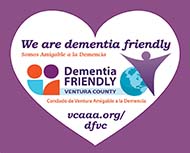Disease Type
 The simplest explanation of a stroke is a sudden lack of blood flow to the brain. These interruptions of blood flow are usually caused by clots in arteries that supply blood to the brain or internal bleeding. Where and how much damage the lack of blood flow affects your brain determines how depilating the variety of symptoms will be.
The simplest explanation of a stroke is a sudden lack of blood flow to the brain. These interruptions of blood flow are usually caused by clots in arteries that supply blood to the brain or internal bleeding. Where and how much damage the lack of blood flow affects your brain determines how depilating the variety of symptoms will be.
For this reason, a stroke can be very complicated to deal with because the damage affects the brain and, therefore, the central nervous system. When your central nervous system is damaged, many extreme symptoms can occur in the body and involve a diverse set of medical treatments.
Diverse Symptoms of A Stroke:
- Immobility and involuntary muscle contractions or spasms from neurological damage may cause pain.
- Aspiration pneumonia can lead to shortness of breath and advanced pulmonary issues.
- Dysphagia, or trouble swallowing, can lead to malnutrition, and GI symptoms, such as nausea, vomiting, or constipation.
- Dermatological issues due to immobility can cause sores that are uncomfortable, painful, and a potential cause of infection.
- Anxiety, restlessness, and depression can result from damage to the brain or its condition.
In-Home Care Can Help Stroke Patients.
Rehabilitation is essential after a stroke or brain injury and can come in many different forms. Many stroke patients experience memory loss, speech impairments, and paralysis. Often, stroke patients need to relearn daily living essentials such as eating and swallowing.
In-home care utilizes Physical, Occupational, and Speech therapists to regain patients’ mobility and cognitive abilities. Many studies have also shown that recovering at home increases patients’ functional levels due to reduced stress from familiar surroundings and less anxiety from the inability to travel easily.
Speech Therapy for Stroke Patients
Speech Therapy is essential for stroke patients experiencing speech and swallowing issues. Speech Therapists will help patients relearn the ability to swallow or provide new techniques to counteract the debilitating symptoms of a stroke. In addition, many patients will experience fewer issues with malnutrition and relieve stress on the family once the ability to feed themselves returns. Speech Therapy also helps reduce aspirations that lead to pneumonia.
Occupational & Physical Therapy for Stroke Patients
Occupational & Physical Therapy can help stroke patients experiencing muscle pain, spasms, and immobility. Getting stroke patients up and moving around also reduces the chance of bed sores forming due to lack of mobility. Stroke patients can also regain strength and confidence, increasing independence and decreasing depression.
Nursing & Home Health Aides
Skilled Nursing can help with many stroke symptoms, including wound care from bedsores. In addition, Home Health Aides can assist with activities of daily living and decrease injuries from getting back to everyday tasks.
Caregivers Can Be Essential
Many families will feel the burden of caring for a family who has had a stroke. Hiring a caregiver can be essential to help a family dynamic and relieve the stress placed on a family member or just provide periodic breaks. Other options include needed cover for care when family members are at work or to reduce the chance of injury as patients get reacclimated to their surroundings.
Using Palliative and Hospice Care Before It’s Too Late
Talking about Hospice and Palliative care is never easy, but it can give stroke patients the best quality of life when the time comes. Unfortunately, one study found that only 9% of stroke patients utilize Hospice and Palliative, although those who received Hospice Care lived an average of 29 days longer than those who did not. This statistic shows a common misconception about Hospice and Palliative care, as it can often help extend a patient’s life versus being its end.
Hospice Care focuses on patients’ symptoms, ensuring they are as comfortable as possible. Often this reduces distress in patients and the overall stress of the disease on the patient.
When Is the Right Time To Talk About Hospice and Palliative Care?
Figuring out when the right time for Hospice and Palliative care can be a hard decision to make. Talking to your doctor is the only true way to determine the life expectancy of a patient, but the following list of symptoms may show when a stroke patient would benefit from Hospice or Palliative care.
- Patient has lapsed into a Coma
- Patient is experiencing a vegetative state
- Level of consciousness of the patient has reduced drastically
- Patient is experiencing continued Weight loss
- Patients’ clinical status continues to decline
- Patient is experiencing severe trouble breathing
- Patient is experiencing severe trouble swallowing
Assisted Home Health & Hospice Can Help Stroke Patients
As a premier Home Health, Hospice, and Caregiver services agency, Assisted Home Health & Hospice can provide the needed specialized care needed for Stroke patients. Our caring and dedicated staff service stroke patients in the comfort of their homes or wherever a patient resides. To receive quality care for your loved one, call us at 800-949-6555 or visit us at www.AssistedCares.com.
Stroke Risk Scorecard
Stroke can occur in individuals of any age, so it’s important to be aware of the contributing risk factors and how to control them. Use the following scorecard to help identify whether you’re in the low, medium, or high-risk category.
Need Help? Call Our Professional Staff Now...800-949-6555
Awards and Certifications
Top Agency

Association of America


The owner of this website has made a commitment to accessibility and inclusion, please report any problems that you encounter using the contact form on this website. This site uses the WP ADA Compliance Check plugin to enhance accessibility.





